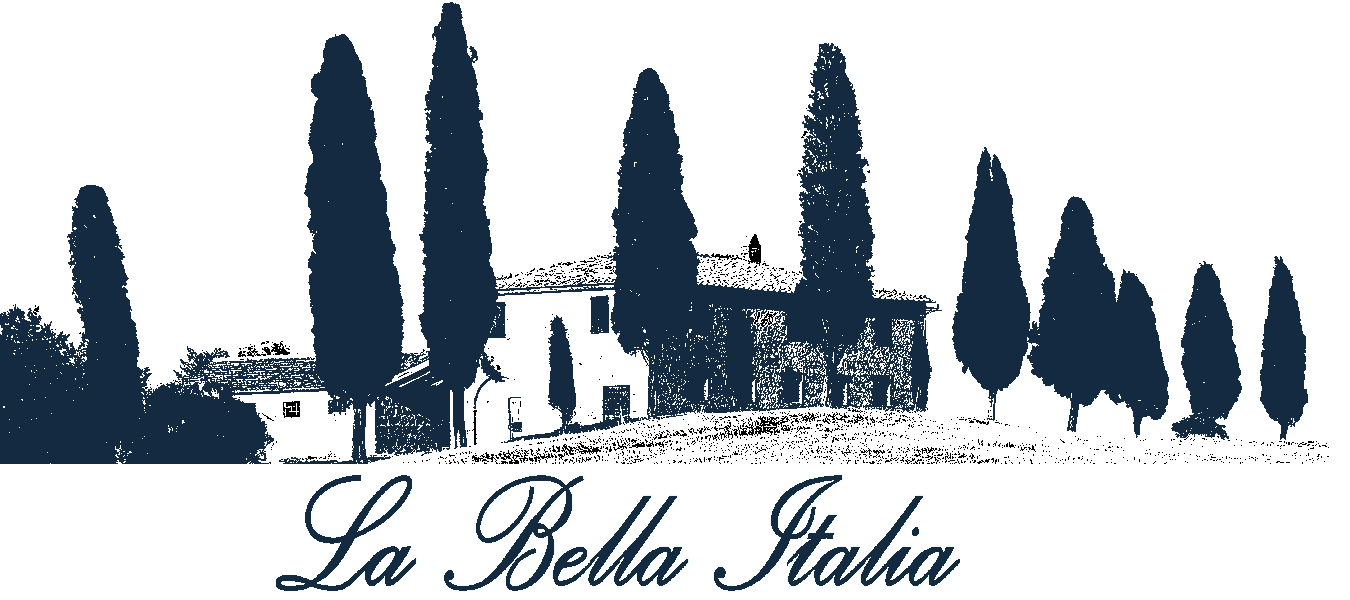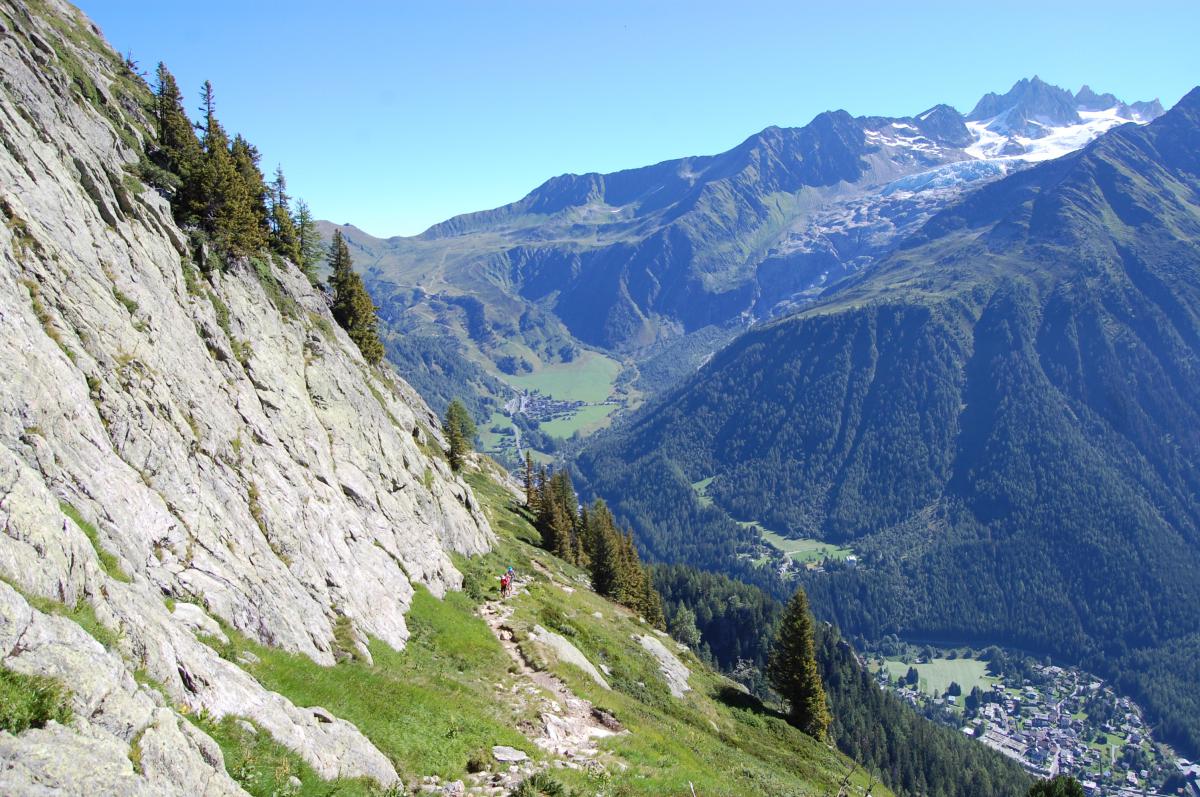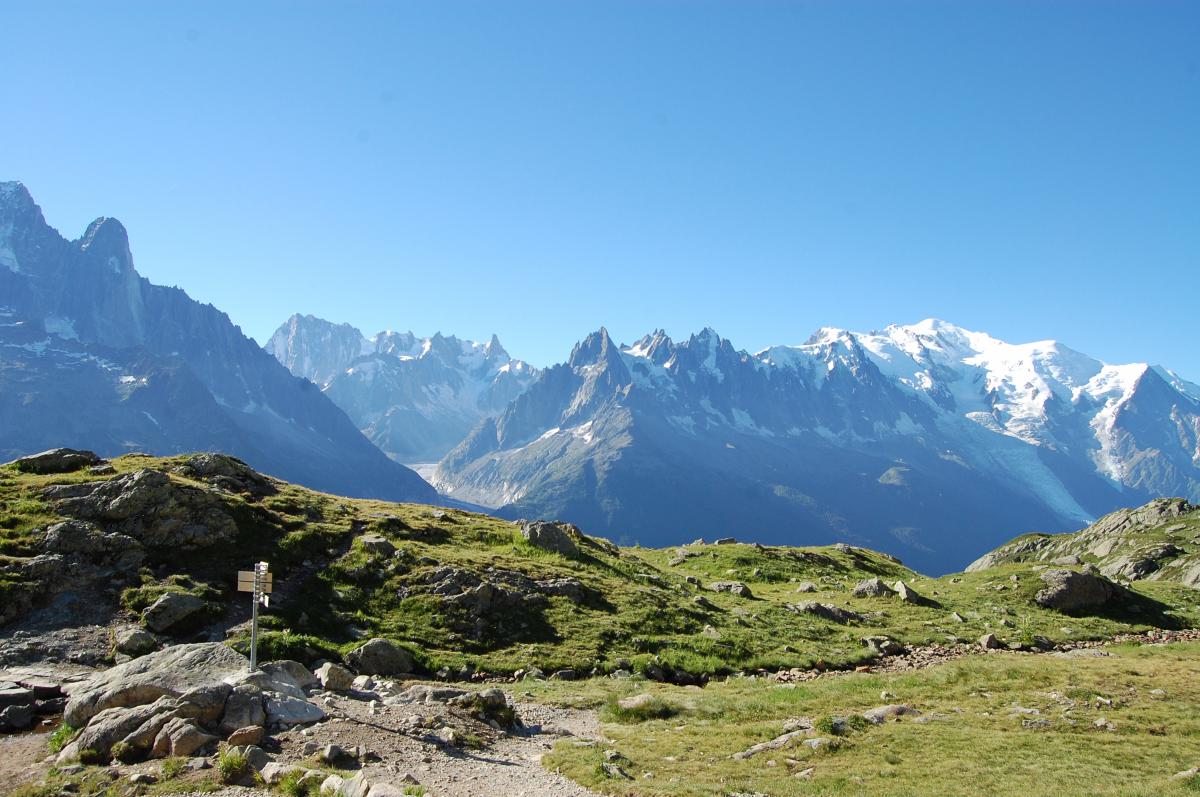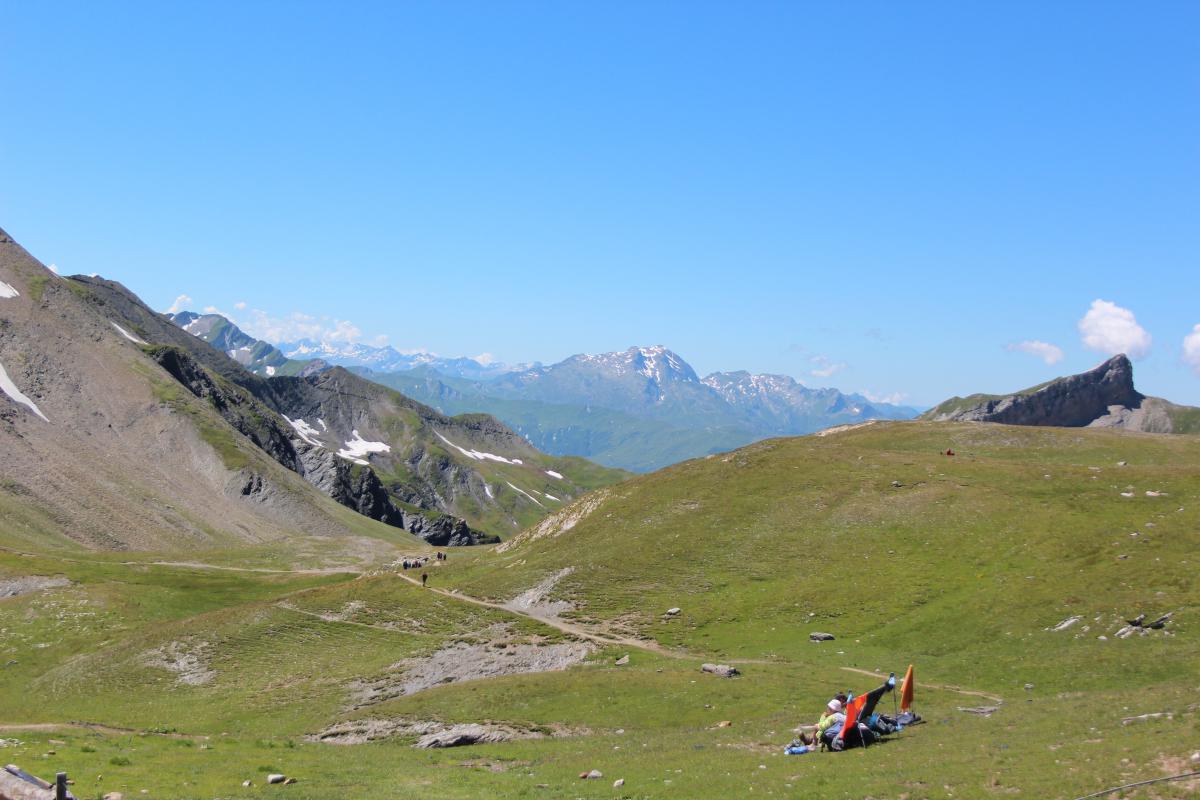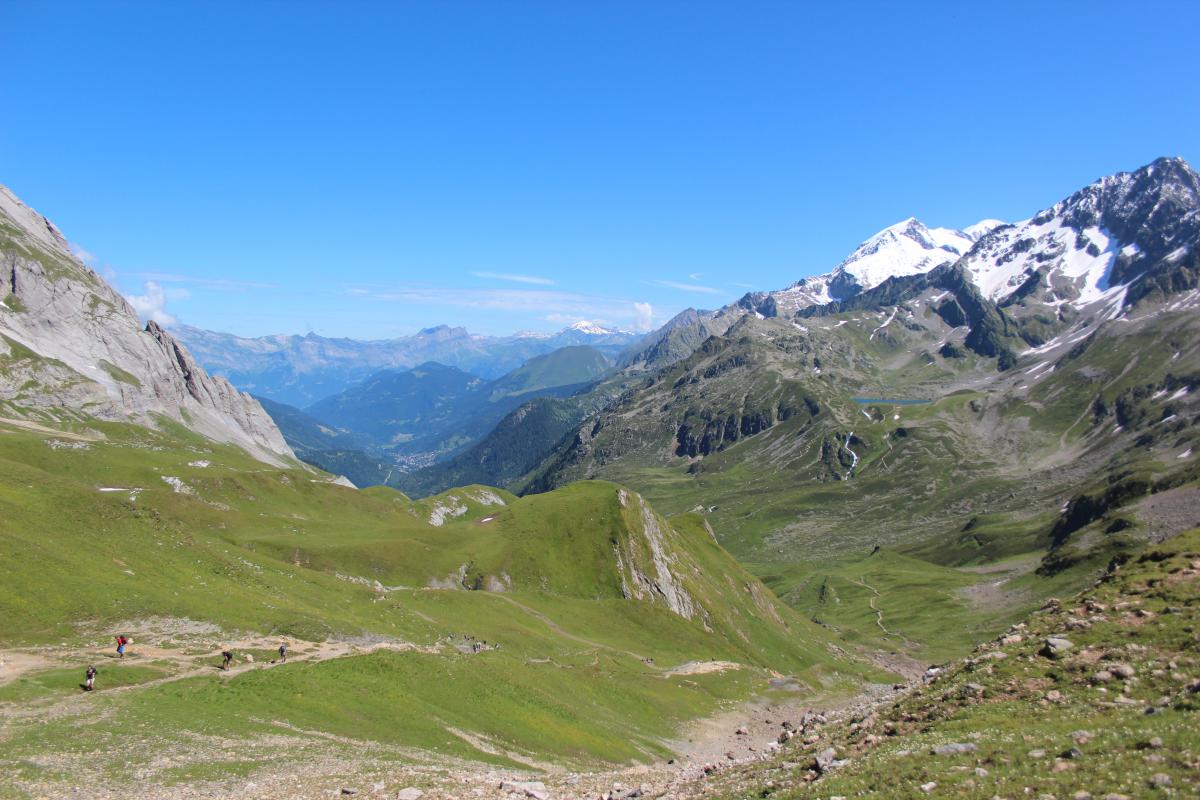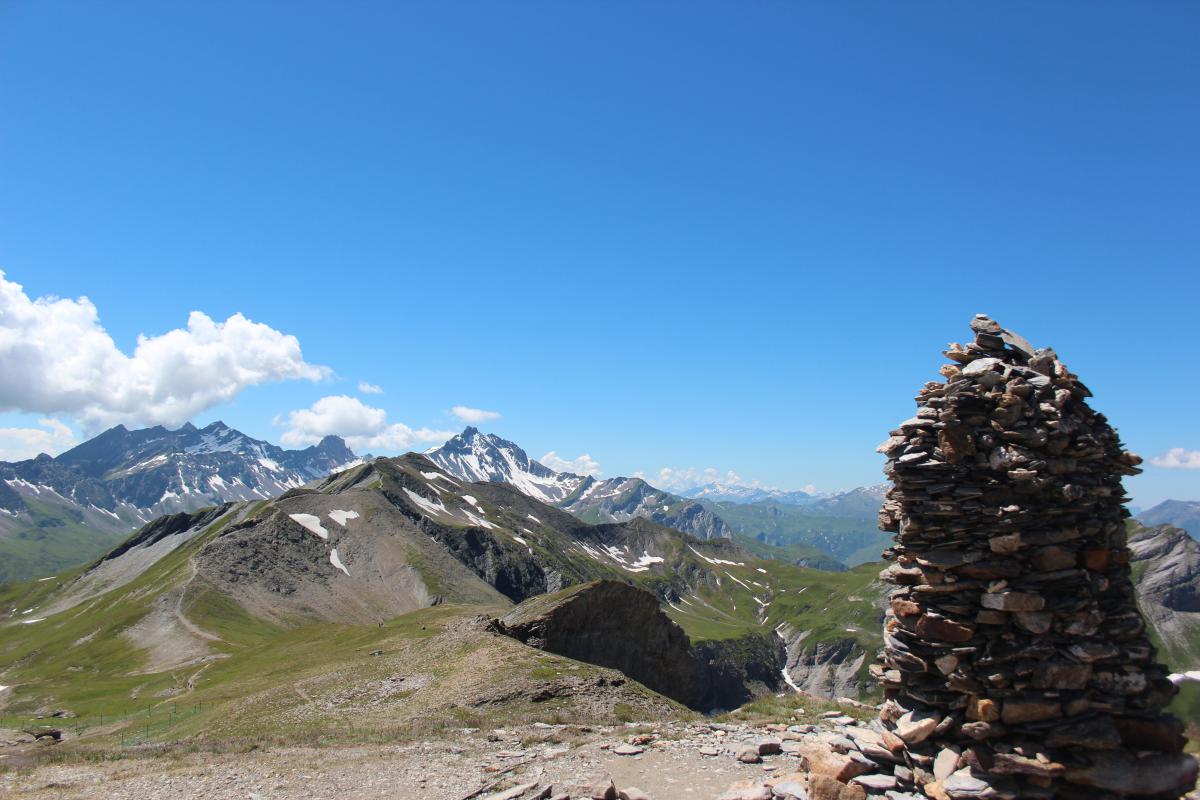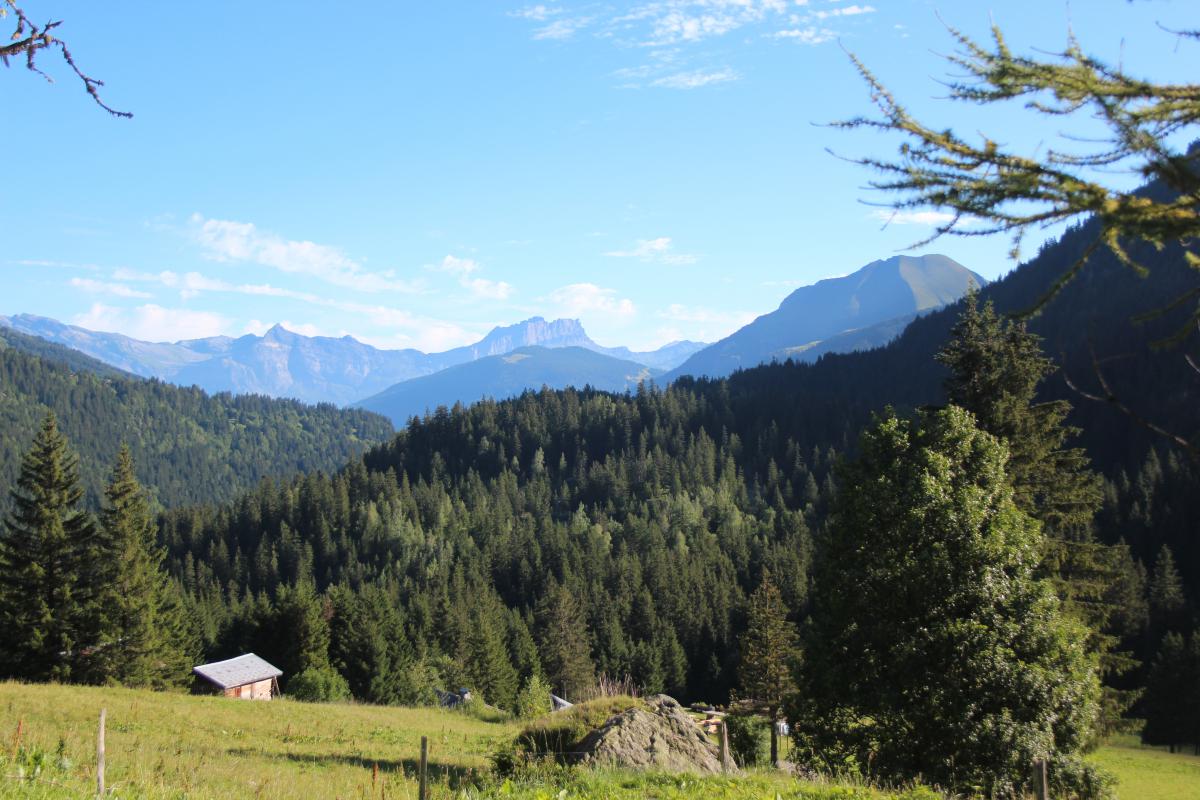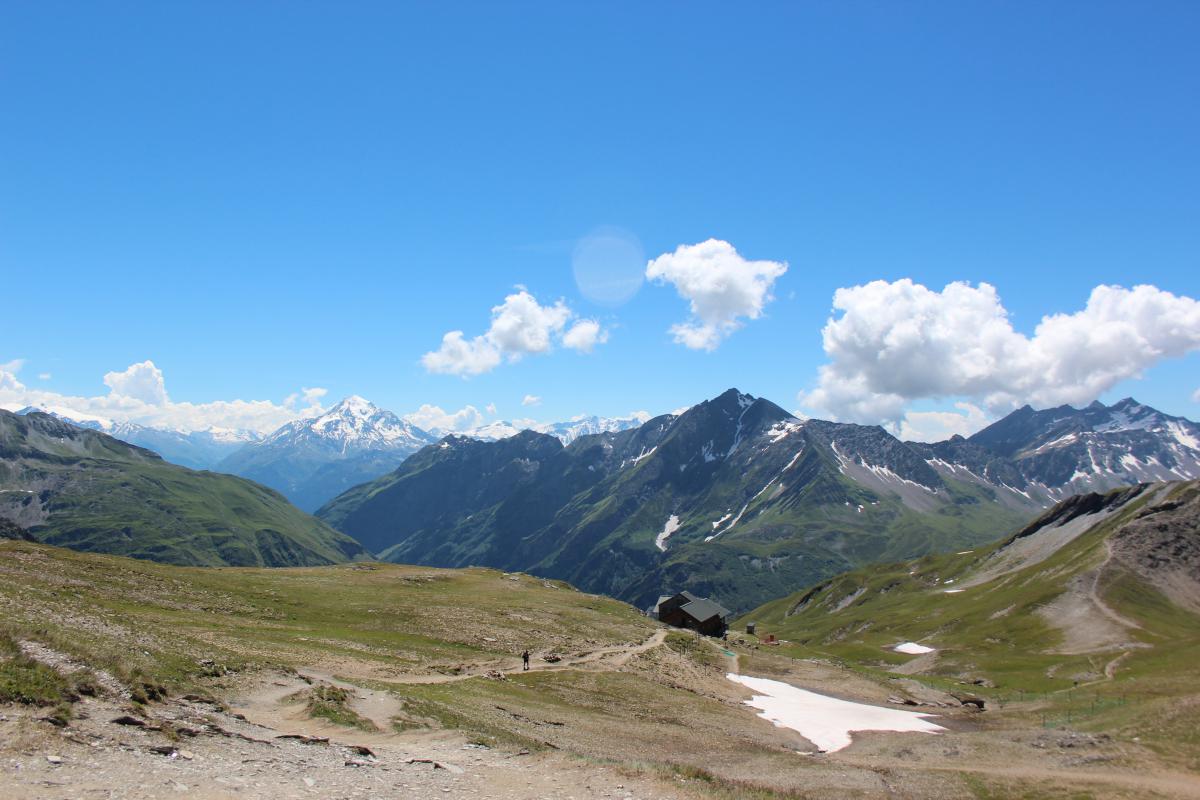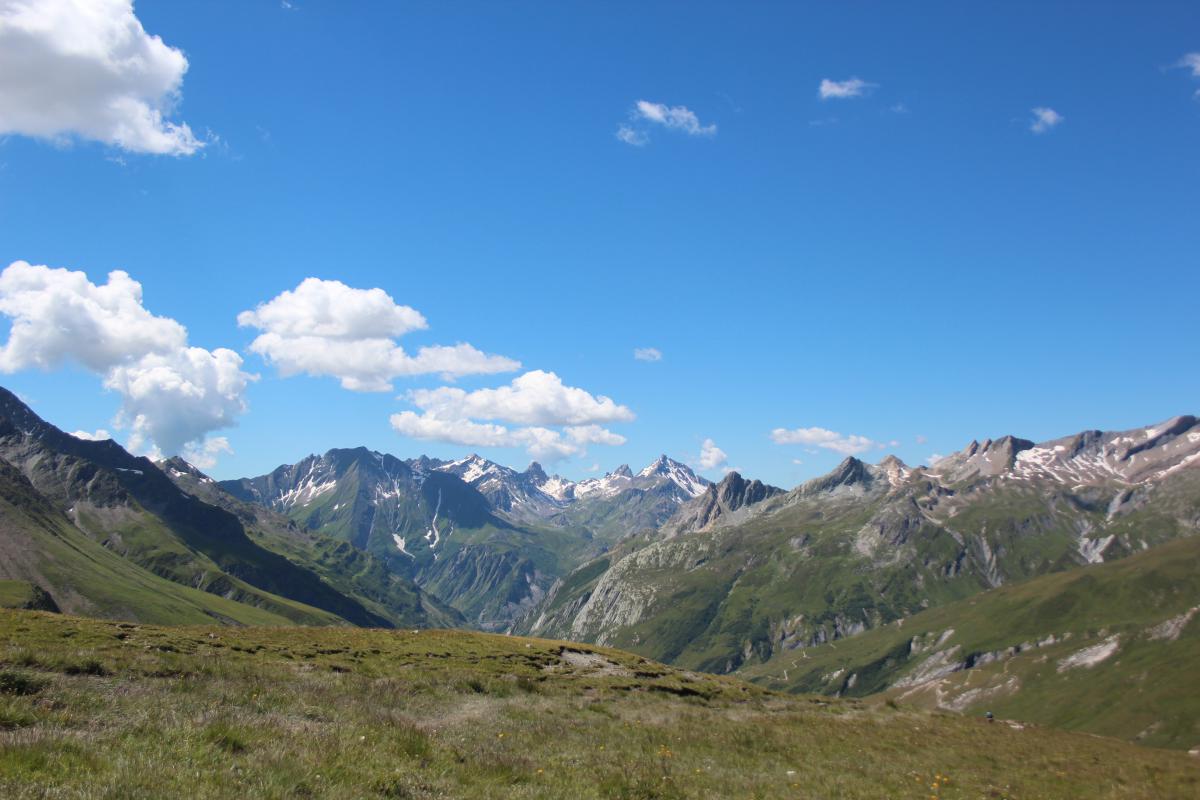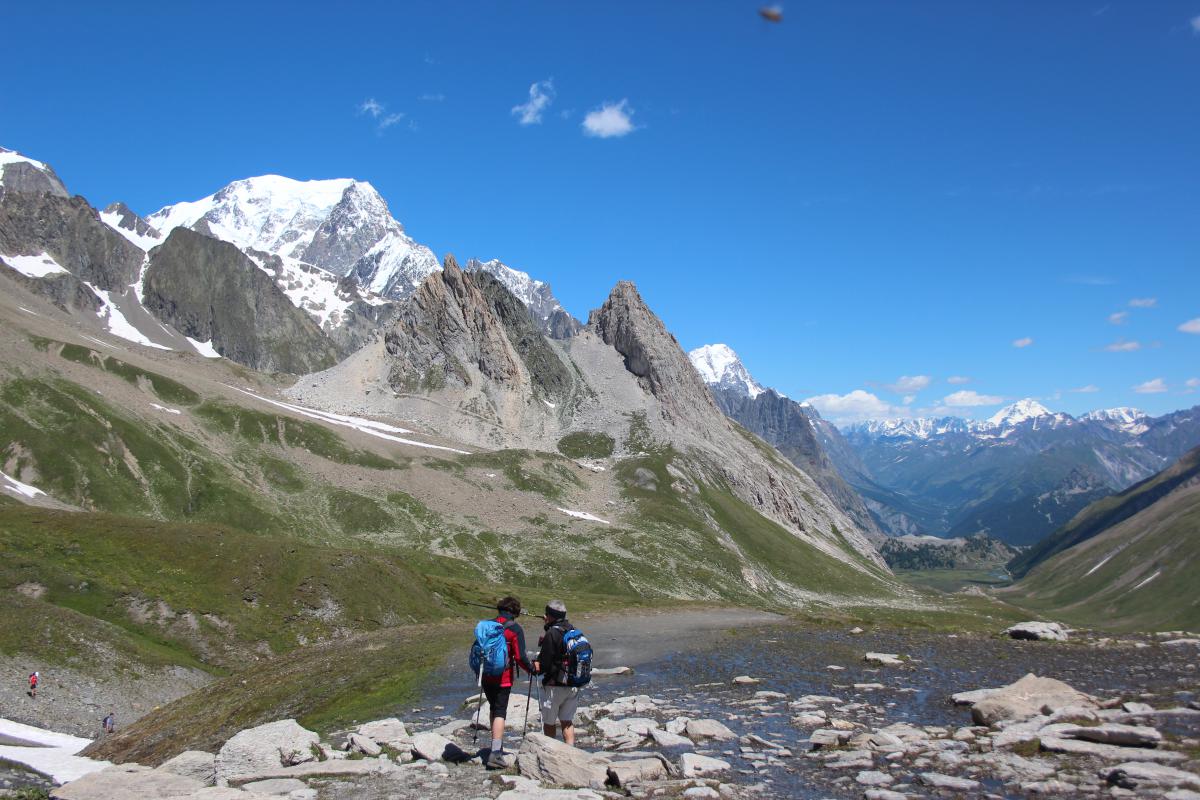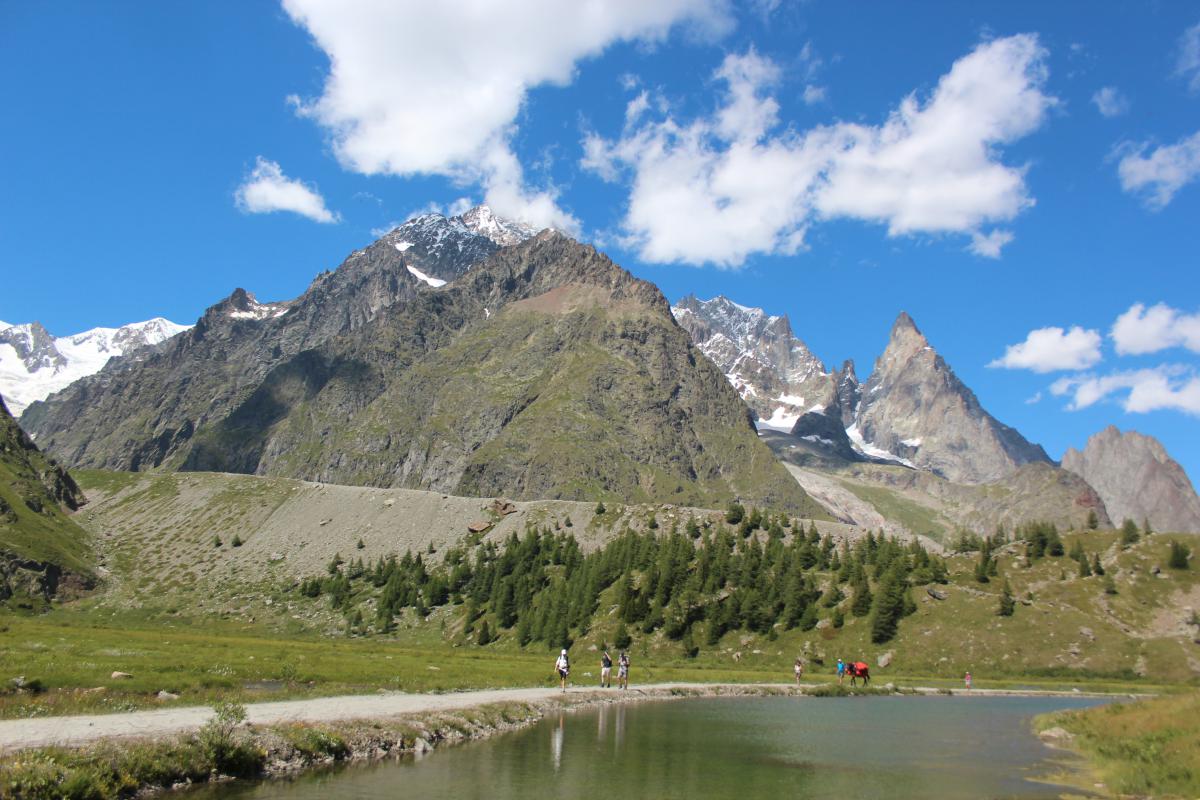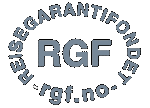AROUND EUROPE`S HIGHEST MOUNTAINS
 Val d`aosta |
|
I fjellandskap |
|
Agriturismo |
Enjoy exhilarating hikes through a magnificent nature with stunning landscapes of dramatic snow-capped peaks, picture-perfect alpine pastures and idyllic meadows. Touring the Mont Blank, Europe’s heighest peak you walk through 3 different countries France, Italy and Switzerland each with their unique architectonic styles and cuisine, a rich variety of wildlife including marmots and chamois, and an extraordinary variety of flowers which bloom in their thousands in spring and summer.
Beginning in the Chamonix valley, you walk across the Alps into Italy, then down to Courmayeur and again into Switzerland, returning to France and the upper end of the Chamonix Valley You overnighting in beautifully located mountain huts where hearty meals provide you with energy for the breath-taking walks. The walks on well-marked trails are satisfyingly long but never exhausting.
TRIP HIGHLIGHTS
• Europe’s highest mountain, with peaks capped by a blanket of snow
• Spellbinding views and wild open spaces • Val Veny and the Aiguille des Glaciers
• Warm, comfortable family-run mountain huts and small hotels
• Rich flora and fauna • Friendly locals with a unique cultural heritage
• Rich and tasty mountain cuisine, including delicious cheeses, polenta, mushrooms
11 Day Programme
Day 1 - Arrive in Chamonix. Chamonix on BB basis
The trek starts in Chamonix: on your first day you can spend your day wandering through the streets of this lively city, do a little shopping in the many shops of the city centre or maybe spoil yourself with a visit to the spa.
Day 2 – Walk from Chamonix to Les Contamines. La Balme/Nant Borrant on HB basis
Today's walk starts with a bus from Chamonix to Les Houches, followed by the Bellevue cable car, up to 1800m. From here, instead of going up the "French normal route" of Mont Blanc (up to the Gouter hut at 3800m and to the summit at 4810m) you follow the edge of the mountain to Col de Voza and then start descending to the valley. Here you can see the typical mountain's way to make the roof of the houses, with large flat stones. Later you go through several small villages on the valley floor with Mont Blanc peeking out again from the sky. The last part of the trail is along the Bon Nant river, to Les Contamines You then continue along an ancient Roman path and one of Europe's most famous trails, across blooming meadows and striking woodland to the refuge, a typical mountain chalet with a breath-taking view. Walkers are accommodated in small dormitories for between six to nine people and a hearty evening meal is served in the chalet's cosy dining room.KM 20,5 HOURS 6,5 /7.
Day 3 – Walk from Les Contamines to Les Chapieux. Les Chapieux on HB basis.
Today's walk takes you through the Plan des Dames up to the Col du Bonhomme (2329m) then still a bit further up to the Col de la Croix du Bonhomme (2479m). You'll see a peculiar combination of stones marking the top of the pass from where you can admire the valleys stretching out for miles around you. From the pass you make a long descent through the open meadows of the Vallee des Chapieux, criss-crossing small brooks and passing mountain huts. At the bottom of the descent you reach the tiny village of Les Chapieux. Your accommodation tonight is a simple mountain hotel. KM 15 HOURS 7
Day 4 – Walk from Les Chapieux to Val Veny/Courmayeur. Rif.Elisabetta/Courmayeur on HB basis
Today is the longest and most demanding day of the holiday but definitely very scenic, with surprising landscapes all the way. After two days spent walking in France, today you go over the Col de la Seigne (2516m) and enter into Italy through the Val Veny. The day starts off with a climb through a deep gorge surrounded by vast pastures with lunar-like scenery as backdrop. The Col de la Seigne and the Aiguille des Glaciers mountainsloom large in the distance on the border between Switzerland and Italy. Once over the top of the pass you descend into the Val Veny Valley on the opposite side of Mont Blanc, from where you can enjoy magnificent views of the snow-capped peaks. Depending on avaibility, today you may be booked at a nice Rifugio in La Lex Blanche or at Courmayeur: if you are booked here, you will walk 5,5 kilometres to reach a bus stop in La Visaille where you will take a bus to Courmayeur.
Walk from Les Chapieux to Val Veny
Option 1: overnight in Val Veny
Option 2: bus to Courmayeur and overnight here
KM 14/19 HOURS 5/7
Day 5 - Walk from Val Veny/Courmayeur to Val Ferret. Val Ferret on HB basis
Today’s walk is divided into 2 parts; if you have slept in Rifugio Elisabetta, in the morning you will walk 5,5 km to the bus stop and descend towards the famous city of Courmayeur by bus. Courmayeur is a renowned ski resort where you can have a well-deserved rest before starting off again with a steep ascent followed by a level walk through meadows and conifer woods to Val Ferret, passing many small brooks, with the wonderful, awe-inspiring silhouette of the Grand Jorasses standing out. If you feel tired, or if you prefer to stroll through the streets of the centre, you can stop in Courmayeur and then take a bus directly to Val Ferret.
KM 5,5 HOURS 2,5 - KM 12 HOURS 4,5
Day 6 – Walk from Val Ferret to La Fouly. La Fouly on HB basis
This morning's walk will take you up a steep ascent and past ruined farmhouses. This marks the start of your journey into Switzerland. The first 4 or so kilometres are a gradual 150m ascent along a surfaced road. If you wish, you can avoid this section by taking the SAVDA bus that stops in front of the hotel. From Waypoint 4 a steep and rewarding climb takes you to Rifugio Elena then on to the border crossing with Switzerland, at the top of the Col du Gran Ferret (2537m). The views of the receding Glacier and the perennial snow of Triolet and Pre de Bar are imposing. The descent is through vast open meadows with very few traces of human settlement. You pass a couple of mountain huts then nearing the small hamlet of Ferret and on to La Fouly, the trail passes through idyllic scenery of forests, creeks and picturesque wooden bridges. You spend the night in the village of La Fouly. KM 14 + 4 HOURS 5/7
Day 7 - Walk from La Fouly to Champex-Lac. Champex-Lac on HB basis.
After the efforts of the last few days, today offers you an easier walk. This section is quite long, but the elevation gains and losses are not so pronounced. Starting off from La Fouly, you follow the river encountering a succession of woods, interrupted by cliff walls and small streams. You then walk through meadows to reach Les Arlaches, a beautiful hamlet with many traditional wood and stone houses. The last stretch is up a long winding climb, it's not too steep and there are interesting wood sculptures along the way to look at. At Orsieres the trail descends to Champex-Lac, a pretty mountain village situated on the lake. You continue past the lake and up the ski area of Arpette where you spend the night. From La Breya ski area you follow the trail to Relais d’ArpetteKM 18 HOURS 6
Day 8 - Walk from Champex-Lac to Trient. Trient on HB basis.
From Arpette to Trient via Fenêtre d'Arpette A spectacular walk over the Fenêtre d'Arpette (2665m) from where you descend along the Glacier du Trient. Trient (1300m) is a village on the pass road from Martigny to Chamonix. In bad weather, there is an alternative route, From Arpette to Trient via Champex-d'en Haut, through cool forests and beautiful alpine meadows that take you to Col de la Forclaz, which is an important link between Switzerland and France. This walk enjoys breathtaking panoramas and reaches 2050m. KM 15,7 HOURS 7
Day 9 - Walk from Trient to Argentière. Le Tour on HB basis.
Today you'll get to have your last views of Mont Blanc and enjoy your final walk to Argentiere. You are above the ski resort of Le Tour from where you hike towards Lake Charamillon (2271 metres). You then continue on to the immense Glacier du Tour and back into France. An exhilarating rocky trail along the mountain crest allows you to enjoy astounding views of the glacier and the surrounding valleys. As you reach the border between Switzerland and France, you can see Mont Blanc shining white, especially on sunny and bright days. You descend among pastures for the last section of the walk until you arrive at Argentiere. KM 14,5 HOURS 4
Day 10 – Walk from Argentiere to Chamonix. Chamonix on BB basis.
The walk today is quite long so start early! You begin walking through the pretty little village Les Frasserands, with the typical wooden houses of the French alps. After going through the botanic path you start climbing uphill, into the Aiguilles Rouges Natural Park. You can decide if you want to continue to climb up to Lac Blanc (it involves the climb of an iron ladder, so if you suffer from vertigo you better not do that) or start descending to La Flegere. The route is very panoramic, in front of you the Mont Blanc massif, with the Aiguille Verte, the Drus, the Aiguille du Midi, Mont Blanc du Tacul and Mont Blanc, untill you arrive at Planpraz, where the cable car will take you down to Chamonix (last one is at 5 pm). If you are tired or in short of time you can also take the cable car at La Flegere.
There are 2 Options for today’s walking
Option 1 is slightly shorter. The 17,5 kilometre walk is expected to take around eight hours to complete and you will ascend a total of 1443 metres and descend 789 metres. Hours 7
Option 2 is longer. The 19,5 kilometre walk is expected to take around around nine hours to complete and you will ascend a total of 1500 metres and descend 1380 metres. Hours 8
Day 11 – Arrivederci Chamonix! The trip and our services end after breakfast unless you have booked extra services or extra nights.
Getting there and away
If you travel by plane, the main airport you could flight in to reach the start of the Mont Blanc walking tour is Genève, in Switzerland.
There are several private companies providing transfers from Geneva to Chamonix and return (http://www.chamonix.net/english/transport/shared-transfers ) starting from 20 Euros per person one way for a shared transfer and from 160 Euros per trip for a private one.
The journey from Geneva to Chamonix takes between 2h 51mins and 3h 25mins depending on connections and day time. Total cost would be around Euro 35. A shuttle transfer by road from Geneva Airport takes about 1h 10mins.
To travel by train between Geneva and Chamonix take the route via Annemasse or via Roche-sur-Foron and St Gervais.
Geneva - Annemasse/ Roche-sur-Foron - St Gervais - Chamonix
In Geneva, the Eaux-Vives and the Cornavin rail stations are being renovated. The train station in Geneva Eaux-Vives is closed from November 27, 2011. The construction of the CEVA (Cornavin, Eaux-Vives, Annemasse Railway Liaison) is on-going and will open 2018. The station was completely destroyed and will be fully rebuilt from scratch. Pending completion, replacement bus services are operating the route from Eaux-Vives to Annemasse and to Roche-sur-Foron. Check the online timetable for Geneva Eaux-Vives - St. Gervais connections.( http://fahrplan.sbb.ch/bin/query.exe/en&HWAI=JS!ajax=yes!&)
The Geneva Cornavin station remains fully operational during the work. Take the train from Geneva (Cornavin) CFF to Annemasse or Roche-sur-Foron via Bellegarde-su-Valserine. From there, change for Le Fayet-Saint Gervais Les Bains, then take the Mont Blanc Express train (http://www.chamonix.net/english/transport/train) for a panoramic ride to Chamonix Mont-Blanc. The Mont Blanc Express runs from St Gervais/Le Fayet all the way through the Chamonix valley, through Forclaz and the Col des Montets to the end line station of Martigny.
Accommodation and Meals
Overnight accommodation ranges from simple guest houses to mountain huts to family-run hotels, all surrounded by the beautiful peaks of the Mont Blanc massif.
Several of the accommodations are mountain huts, with shared bathrooms, in some of them only dormitory is available. Some accommodation have double rooms with or without en-suite bathroom If you stay in dorm rooms, you will need to bring a travel sheet and a towel (blankets and pillows are provided). Sheets and towels are included when staying in private rooms.
Mountain huts have an early checkout time, generally around 8.30
In a few stages there will be rooms with private, en-suite bathrooms; otherwise shared shower and toilet facilities are found in the hallways.
Breakfast and dinner is provided every day.
Upon your arrival, remember to ask the accommodation owners to provide a packet lunch (to be paid on the spot) for the walk of the day after or, when you stay close to a village, you can buy your packet lunch in one of the local shops.
Alternative accommodation
During high season it is possible that you might sleep in different accommodation to the ones that are indicated in the description. In some cases it is possible that your list of accommodation differs somewhat. This means that start or end of the routes are slightly altered. Therefore you should check to see if your accommodation is the same as that mentioned in this programme. If not, you must be alert at the start and end of the routes.
In choosing alternative accommodation we have tried to maintain the same standards and quality. We have also tried to stay in the same towns and villages, in order to change routes as little as possible.
Luggage transfers
The luggage transfer is OPTIONAL for this trip.
If you have NOT booked this service at the moment of reservation then you have to take the luggage with you when you change accommodation. If you have booked the luggage transfer, the supplier will take your bags to your next accommodation.
In this case, please clearly mark all your belongings with your name and put a small note with the name of the next accommodation in order to indicate where the
bags should go to next, bags should be ready and at the reception or store room by 8:00 hrs.
When you travel with public transport you always take your luggage with you unless specified differently.
A note on our self guided adventures
Self guided walking or cycling requires individuals to use problem solving skills, be adaptable and have a keen eye. It is recommended that you are comfortable map reading, referring to route notes and that you have a good sense of direction (or are willing to work on improving this!) Sometimes route finding, losing your way, finding it again and asking the locals for help is all part of the adventure. If you’ve never been on a self guided trip, after the first couple of days you will get the hang of if as the vast majority of our first time travellers attest. Please be assured that our written material issued to you for route finding is updated regularly and we provide a 7days service hotline in the event of any problems. There is a certain level of the unknown that comes with self guided trips; however with a methodical approach potential problems will be averted. The freedom of a self guided trip is something that, once experienced, is sought time and time again.
Fitness preparation
The concept behind most of our trips is active holidays and the fitter you are the more easily you will adjust and enjoy yourself. We expect participants to take responsibility for their fitness and preparations on a consistent basis prior to departure, and INCREASE the regular weekly training schedule in the two months leading up to departure. That way, when you start walking, you will feel relaxed and comfortable and strong, having done more than sufficient preparation for the trip. You will also have more energy to enjoy the views, take photos and explore the sights in your spare time, rather than just make it to the next hotel. During the day is when the most interesting features of interest will be found, and being fit allows you to optimize every situation you encounter. As a minimum, we recommend 40 minutes of aerobic type exercise; running, swimming, biking, hill walking, or gym work two to three times a week for two to six months leading up to your walk. Note the best training is the activity that you are actually going to be doing; walking up and down hill, and cross-country. Practice this as much as possible. Training should be stepped up as you get closer to departure, to an amount you feel appropriate (you don’t want to cause yourself an injury!). Using your gear before departure (boots, daypack, clothing, etc.) gives familiarity and comfort whilst on the walk. It makes sense to know that all your gear ‘works for you’ BEFORE departure, rather than discovering how things work or fit (or don’t!) on the trip you have invested so much in. Use the philosophy of ‘getting fit to go walking’, rather than ‘going on a walk to get fit’, to avoid problems.
| Priser | Sesong A | Sesong B | |||
| 15.06-03.07 28.07-15.09 | 04.07-27.08 | ||||
| Three Countries - Tour du Mont Blanc - 11 days | Pris per person i dobbelt rom med bagasjetransport | 10 netter | € | 1,550 | 1,600 |
| Pris per person i dobbelt rom uten bagasjetransport | 10 netter | € | 1,150 | 1,200 | |
| Pris per person i tremanns rom med bagasjetransport | 10 netter | € | 1,350 | 1,450 | |
| Pris per person i tremanns rom uten bagasjetransport | 10 netter | € | 1,100 | 1,150 | |
| Annen informasjon | |
| Informasjonspakke, kart og veibeskrivelse | Inkludert |
| Frokost | Inkludert |
| Middag | Dag 2 til dag 9 - tilsammen 8 middager. |
| Turistskatter | Betales lokalt hvis de lokale myndigheter krever det. |
| Utstyr og tjenester | |
| N. Participants | Minimum 2 person |
| Trip grade & Activity characteristics | You follow well-marked hiking trails, with the lettering TMB (Tour du Mont Blanc). The route indications are in red and white stripes In France and at altitude in Switzerland, and with a black diamond shape on a yellow background in the valley of Italy and Switzerland. The markings are in both directions; they are made with paint and are easily visible. These marks are placed regularly on trees, rocks, walls, and fences, etc. The routes described here sometimes involve steep ascents and descents, but can be walked by a reasonably fit adult. Some stages are very long so we recommend always to carry enough food and water, and start off for the walks early in the morning. On some occasions there are optional opportunities for climbing local peaks; these are obviously more difficult trails, suitable only for experienced mountain hikers. There are no technically difficult sections nor do they require scrambling, but the trip is not suitable if you suffer of heights as there are sections that could feel exposed |
| Best arrival & departure airport: | Genève |
| Best arrival & departure station: | Le Fayet-Saint Gervais Les Bains |
| Trip availability | Any day from 15/06 to 15/09 |
La Bella Italia
Organisasjonsnummer: 981066480
Adresse: RE Gründerhus, Torvveien 19, 1383 Asker
E-post: info@labellaitalia.no
Mobil: +47 971 54 806
Merk: Selv om vi gjør vårt ytterste for at informasjonen på disse sidene skal være korrekt til enhver tid,
kan det hende at det sniker seg inn feil i beskrivelsene av produktene og i prisene.
Vi tar derfor forbehold om at slike feil kan finnes.
